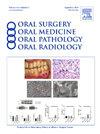Decoding and targeting genes regulating the malignant potential of oral proliferative leukoplakia through a sequential computational approach
IF 1.9
3区 医学
Q2 DENTISTRY, ORAL SURGERY & MEDICINE
Oral Surgery Oral Medicine Oral Pathology Oral Radiology
Pub Date : 2025-07-21
DOI:10.1016/j.oooo.2025.04.060
引用次数: 0
Abstract
Introduction
Oral proliferative leukoplakia (OPL) is a multifocal aggressive form of oral potentially malignant disorders (OPMD), carrying a higher malignant potential than solitary oral leukoplakia (OL).
Materials and Methods
The present study used a sequential computational approach to compare the molecular profile of OPL and OL to decode the genes responsible for augmenting the malignant potential of OPL. The analysis included integrated gene expression profiling, protein interaction network, molecular interconnectivity, survival assessment, and molecular docking with the existing anti-cancer drugs.
Results
OPL showed 159 genes that were distinctly upregulated compared to OL. Among these 13 genes were found to be associated with oral squamous carcinoma (OSCC). Further construction of a protein network from the 13 gene-encoded proteins activated diverse cancer-related pathways. Simultaneously, the expression of these 13 genes altered the survival rate in OSCC patients. Screening of 241 anti-cancer drugs against these 13 regulators, revealed the 3 most effective inhibitors.
Conclusion
The study decoded the key regulatory genes responsible for augmenting the malignant potential of OPL. Further, a significant association was observed between the decoded genes and the survival of OSCC patients. Anti-cancer medications capable of inhibiting these key regulators were identified. The application of the 3 most effective inhibitors could potentially prevent the malignant transformation of OPL.
通过顺序计算方法解码和靶向调节口腔增殖性白斑恶性潜能的基因
口腔增生性白斑(OPL)是一种多灶性侵袭性口腔潜在恶性疾病(OPMD),具有比孤立性口腔白斑(OL)更高的恶性潜能。材料和方法本研究采用序列计算方法比较OPL和OL的分子谱,以解码增加OPL恶性潜能的基因。分析包括整合基因表达谱、蛋白相互作用网络、分子互联性、生存评估以及与现有抗癌药物的分子对接。结果与OL相比,opl有159个基因明显上调。其中13个基因被发现与口腔鳞癌(OSCC)相关。13个基因编码蛋白进一步构建了一个蛋白质网络,激活了多种癌症相关途径。同时,这13个基因的表达改变了OSCC患者的生存率。筛选了241种针对这13种调节因子的抗癌药物,发现了3种最有效的抑制剂。结论本研究解码了增强OPL恶性潜能的关键调控基因。此外,在解码基因和OSCC患者的生存之间观察到显著的关联。能够抑制这些关键调节因子的抗癌药物已被确定。应用3种最有效的抑制剂可以潜在地阻止OPL的恶性转化。
本文章由计算机程序翻译,如有差异,请以英文原文为准。
求助全文
约1分钟内获得全文
求助全文
来源期刊

Oral Surgery Oral Medicine Oral Pathology Oral Radiology
DENTISTRY, ORAL SURGERY & MEDICINE-
CiteScore
3.80
自引率
6.90%
发文量
1217
审稿时长
2-4 weeks
期刊介绍:
Oral Surgery, Oral Medicine, Oral Pathology and Oral Radiology is required reading for anyone in the fields of oral surgery, oral medicine, oral pathology, oral radiology or advanced general practice dentistry. It is the only major dental journal that provides a practical and complete overview of the medical and surgical techniques of dental practice in four areas. Topics covered include such current issues as dental implants, treatment of HIV-infected patients, and evaluation and treatment of TMJ disorders. The official publication for nine societies, the Journal is recommended for initial purchase in the Brandon Hill study, Selected List of Books and Journals for the Small Medical Library.
 求助内容:
求助内容: 应助结果提醒方式:
应助结果提醒方式:


